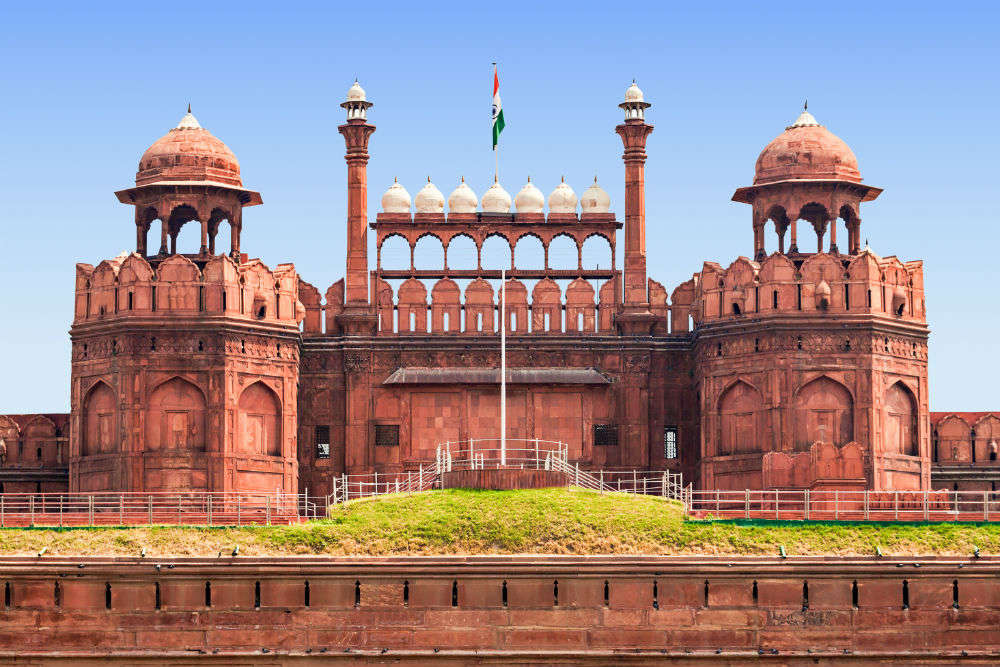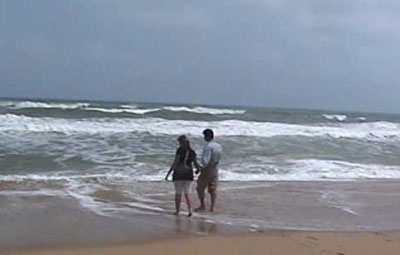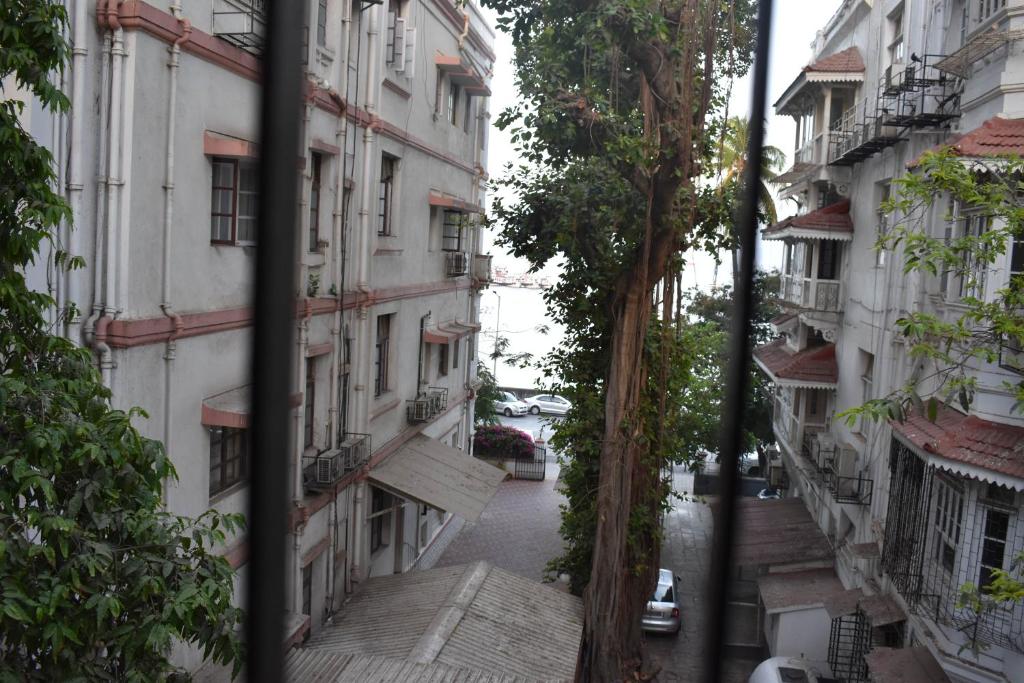The Red Fort is a historic marvel in India. It symbolizes India’s rich heritage and culture.
Built in the 17th century by Emperor Shah Jahan, the Red Fort stands as a testament to Mughal architecture. Its red sandstone walls have witnessed centuries of history, from royal ceremonies to India’s independence speech. The fort’s intricate carvings and expansive courtyards reflect the grandeur of the Mughal era.
Visiting the Red Fort is like stepping back in time, experiencing the splendor and significance of India’s past. Whether you’re a history enthusiast or a curious traveler, the Red Fort offers a glimpse into the stories that shaped a nation. Let’s explore the history, architecture, and importance of this iconic landmark.
Introduction To Red Fort
Red Fort is a historic monument in Delhi, India. It symbolizes India’s rich history and culture. Built by Mughal Emperor Shah Jahan, it stands as a testimony to Mughal architecture.
Historical Significance
Red Fort played a crucial role in India’s history. It served as the main residence of Mughal emperors for nearly 200 years. The fort witnessed many historical events and decisions. Independence Day celebrations take place here every year.
Architectural Marvel
Red Fort is an architectural wonder. Its massive red sandstone walls are impressive. The fort features intricate carvings and designs. It includes several structures like Diwan-i-Aam and Diwan-i-Khas. The fort’s architecture blends Persian, Timurid, and Indian styles.

Credit: www.britannica.com
Construction And Design
The Red Fort, a UNESCO World Heritage site, showcases Mughal architecture with its grand red sandstone walls. Its intricate carvings and expansive gardens reflect the artistry of its time.
The Red Fort, an iconic symbol of India’s rich history, stands as a testament to the grandeur of the Mughal Empire. This magnificent structure is not just a fort; it is a masterpiece of architecture and design, showcasing the ingenuity of its creators. Let’s delve into the intricate details of its construction and design, which continue to mesmerize visitors from around the world.Foundation And Planning
The foundation of the Red Fort was laid in 1638 by the Mughal Emperor Shah Jahan. You can almost imagine the meticulous planning that went into its construction. The site was strategically chosen on the western bank of the Yamuna River, which provided a natural defense. Shah Jahan wanted the fort to be a symbol of power and grandeur, reflecting the might of his empire. The planning phase involved some of the best architects and artisans of the time. They worked tirelessly to ensure that every detail was perfect. Can you picture the hustle and bustle of workers, each contributing their skills to bring this vision to life? The foundation was strong, built with red sandstone, ensuring the fort would stand the test of time.Architectural Style
The architectural style of the Red Fort is a blend of Persian, Timurid, and Indian architectural elements. It’s fascinating to see how these styles merged to create something unique and awe-inspiring. The fort is known for its massive enclosing walls, which stand tall at 75 feet. These walls are not just for defense; they also add to the fort’s majestic appearance. As you walk through the fort, you’ll notice the intricate carvings and the use of white marble, which contrasts beautifully with the red sandstone. Have you ever wondered how these designs were created? The artisans used a technique called pietra dura, which involved inlaying precious stones into the marble. This technique added a touch of luxury and elegance to the fort’s design. The Red Fort also includes several iconic structures, such as the Diwan-i-Aam (Hall of Public Audience) and the Diwan-i-Khas (Hall of Private Audience). These halls were used for important meetings and gatherings, and their design reflects their significance. The Diwan-i-Khas, for instance, is adorned with intricate floral motifs and precious gems, showcasing the opulence of the Mughal court. Walking through the Red Fort, you can’t help but marvel at the sheer brilliance of its construction and design. It’s not just a fort; it’s a piece of art that tells the story of a glorious past. Next time you visit, take a moment to appreciate the craftsmanship and the vision that went into creating this architectural wonder.Key Features
The Red Fort, an iconic symbol of India’s rich history, boasts several remarkable features. Each corner of this majestic structure speaks volumes about the architectural brilliance and the cultural significance it holds. Today, we’ll delve into some key features that make the Red Fort a must-visit.
Lahore Gate
One of the first things you notice when you approach the Red Fort is the imposing Lahore Gate. This grand entrance is more than just a gateway; it’s a testimony to the fort’s historical importance. Walking through it, you can almost hear the echoes of centuries past. Have you ever wondered what stories these gates could tell if they could speak?
When I first visited the Lahore Gate, I was struck by its sheer size and the intricate carvings. It made me realize the amount of craftsmanship that went into building this fort. You can feel the weight of history as you pass through the gate, making it a perfect starting point for your exploration.
Diwan-i-aam And Diwan-i-khas
Moving deeper into the fort, you’ll find the Diwan-i-Aam and Diwan-i-Khas. These are not just halls; they were the heart of political and royal activities. The Diwan-i-Aam, or Hall of Public Audience, was where the emperor addressed the common people. Imagine being part of those gatherings, witnessing decisions that shaped history.
The Diwan-i-Khas, or Hall of Private Audience, is equally fascinating. This is where the emperor met with his courtiers and foreign dignitaries. It’s a place of power and strategy. The craftsmanship here is extraordinary, with intricate designs that leave you in awe. You might find yourself wondering about the discussions and plans that took place within these walls.
As you walk through these halls, it’s hard not to feel a connection to the past. The architecture is designed to make you feel the grandeur and importance of the activities that once occurred here. What thoughts cross your mind when you stand in a place where history was made?
Each visit to the Red Fort uncovers new layers of its significance. Have you ever experienced something that made you feel connected to history? The Red Fort offers such moments at every turn, making it an unforgettable journey through time.

Credit: en.wikipedia.org
Gardens And Water Features
The Red Fort, a symbol of Mughal grandeur, boasts magnificent gardens and water features. These elements reflect the Persian-influenced architecture and design. Visitors are enchanted by their beauty and historical significance.
Hayat Bakhsh Bagh
Hayat Bakhsh Bagh, or “Life-Bestowing Garden,” is a marvel. This garden was the largest in the fort. It featured lush lawns, vibrant flowers, and shaded walkways. The garden offered a serene retreat for the Mughal emperors.
Three main sections divided the garden. Each section had unique plants and flowers. The layout followed a typical Mughal charbagh style. This style divided the space into four parts. Pathways and water channels intersected the garden. These elements created a refreshing atmosphere.
Nahr-i-bihisht
Nahr-i-Bihisht means “Stream of Paradise.” This water feature was a key part of the Red Fort’s beauty. Water flowed through intricate channels and pools. The design was both practical and decorative. It kept the fort cool during hot summers.
The stream began at the northeast corner. It flowed through the main garden and into various palaces. The water channels were lined with white marble. This added to the visual appeal. Small fountains and cascades enhanced the soothing sound of flowing water.
Cultural And Political Importance
The Red Fort in Delhi holds significant cultural and political importance. It symbolizes India’s rich history and the shifts in power over centuries. This iconic fort has witnessed many important events and transformations.
Mughal Era
During the Mughal Era, the Red Fort served as the main residence of the emperors. Built by Emperor Shah Jahan in the 17th century, it showcases Mughal architecture’s grandeur. The fort’s walls, made of red sandstone, stand tall and majestic.
Inside, you will find beautiful palaces, halls, and gardens. These structures reflect the sophistication and wealth of the Mughal Empire. The Diwan-i-Aam and Diwan-i-Khas are notable halls where emperors met with their subjects and dignitaries.
The fort also hosted grand celebrations and important state functions. It was a center for arts, culture, and politics. Many decisions that shaped the history of India were made within its walls.
British Occupation
During the British Occupation, the Red Fort’s role changed significantly. The British used it for military purposes and as a base. They built new structures and altered the fort’s original design.
In 1857, during the Indian Rebellion, the fort became a symbol of resistance. Indian soldiers and leaders used it as a stronghold against the British. The rebellion was a significant event in India’s fight for independence.
After the rebellion, the British captured and used the fort to try and imprison Indian leaders. The fort became a site of political trials and executions. These actions left a deep mark on India’s history and struggle for freedom.
Today, the Red Fort stands as a reminder of India’s colonial past and its journey towards independence. It continues to be a place of national pride and historical significance.

Credit: timesofindia.indiatimes.com
Events And Festivals
Red Fort hosts vibrant events and festivals showcasing India’s rich heritage. Celebrations often feature music, dance, and historical reenactments. Visitors experience the majestic ambiance and cultural diversity.
The Red Fort is not just a historical monument; it’s a lively hub of cultural activities and national pride. Throughout the year, the fort plays host to a variety of events and festivals that attract visitors from all over the world. These events bring history to life and offer a unique glimpse into India’s rich cultural heritage. Whether you’re a history enthusiast or simply looking for an unforgettable experience, the Red Fort’s events and festivals have something for everyone. ###Independence Day Celebrations
Independence Day at the Red Fort is a spectacle you should not miss. Every year on August 15th, the Prime Minister of India hoists the national flag here. It’s a day of immense pride and patriotism. The fort is adorned with tricolor lights, and you can feel the excitement in the air. Why should you attend? – Witness a piece of living history – Experience the emotional speech by the Prime Minister – Enjoy the cultural performances that follow the flag hoisting I still remember my visit last year. The crowd’s enthusiasm was contagious. People from different backgrounds came together, sharing a collective sense of pride. It was a humbling experience that left me with goosebumps. ###Sound And Light Show
The Sound and Light Show at the Red Fort is another event that will leave you mesmerized. Held every evening, the show narrates the history of the fort through a captivating blend of light and sound. The fort’s walls become a canvas, displaying vivid images and stories from the past. What makes it special? – The show is available in both Hindi and English – Perfect for families and history buffs – Offers a unique way to learn about India’s history I was skeptical at first, but the moment the lights dimmed and the narrative began, I was hooked. The combination of historical storytelling and visual effects was stunning. It was like watching history unfold right before my eyes. Practical Tips: – Arrive early to get the best seats – Check the schedule in advance as show timings may vary – Bring a light jacket; evenings can get chilly Have you ever wondered what it would be like to walk through history? The Sound and Light Show at the Red Fort answers that question in the most spectacular way. Why not add it to your travel bucket list? The Red Fort’s events and festivals offer something for everyone. Whether you’re there for the grand Independence Day celebrations or the mesmerizing Sound and Light Show, you’re sure to leave with unforgettable memories. So, when are you planning your visit?Preservation And Restoration
Red Fort’s preservation and restoration ensure its historic beauty endures. Experts carefully repair damaged sections, maintaining its grand structure. This work keeps the Red Fort’s legacy alive for future generations.
## Preservation and Restoration Preserving the Red Fort is more than just maintaining a building. It’s about holding onto a piece of history that has shaped the identity of India. The fort stands as a testament to the architectural brilliance of the Mughal era and the resilience of a nation. However, like any historical monument, it faces numerous challenges in the modern age. Let’s delve into the efforts made to conserve this iconic structure and the hurdles it encounters today. ###Conservation Efforts
Conservation efforts for the Red Fort are ongoing and multifaceted. The Archaeological Survey of India (ASI) plays a crucial role in these efforts. They have been meticulously working on restoring the intricate carvings and structures within the fort. The ASI employs traditional techniques and materials to ensure authenticity. Regular cleaning and chemical treatments help protect the red sandstone from pollution and weathering. Moreover, the use of modern technology, like 3D mapping, allows for precise restoration work. Community involvement is also essential. Local artisans and craftsmen contribute their skills, ensuring that the restoration is both authentic and sustainable. ###Modern Challenges
Despite these efforts, the Red Fort faces significant challenges. Urbanization around the fort has increased pollution levels, accelerating the wear and tear of the structure. The bustling city of Delhi, with its traffic and industrial activities, poses a constant threat to the fort’s integrity. Visitor management is another critical issue. The fort attracts thousands of visitors daily, and managing this footfall without causing damage is a delicate balancing act. Measures such as restricting certain areas and using guided paths help, but the challenge remains. Climate change also plays a role. Unpredictable weather patterns and increased rainfall can lead to water damage and erosion of the stone. Given these challenges, what more can be done? How can you, as a visitor, contribute to preserving this historical gem? Perhaps by being mindful of your actions during your visit, supporting conservation initiatives, or even spreading awareness about the importance of preserving such sites. Preserving the Red Fort is a shared responsibility. It requires concerted efforts from authorities, locals, and visitors alike. Through collaboration and respect for this historical marvel, we can ensure that future generations get to experience its grandeur.Visitor Information
Visiting the Red Fort in Delhi can be an unforgettable experience. This magnificent structure offers a deep dive into India’s rich history. To make your visit smooth, here is some important information.
Tourist Attractions
The Red Fort houses several must-see attractions. The Lahori Gate serves as the main entrance and makes for a perfect photo spot. The Diwan-i-Aam, or Hall of Public Audiences, is where the emperor addressed the public. The Diwan-i-Khas, or Hall of Private Audiences, was used for meetings with important guests. The Rang Mahal, or Palace of Colors, offers a glimpse into royal living quarters. Don’t miss the Moti Masjid, a beautiful pearl mosque, for its stunning architecture.
Guided Tours
Guided tours are available for those who want detailed insights. These tours provide historical context and interesting facts. Knowledgeable guides share stories that bring the fort to life. Audio guides are also an option for those who prefer exploring at their own pace. These are available in multiple languages, making it easier for non-native speakers. Booking a guided tour can make your visit more enriching.
Frequently Asked Questions
What Happened At The Red Fort?
The Red Fort witnessed India’s independence celebration on August 15, 1947. Prime Minister Nehru hoisted the national flag.
Why Is Red Fort Famous In Delhi?
Red Fort is famous in Delhi for its historical significance and stunning Mughal architecture. It served as the main residence of Mughal emperors. The fort also hosts the annual Independence Day celebrations, making it a symbol of India’s rich history and freedom struggle.
How Long Does It Take To Tour The Red Fort?
A typical tour of the Red Fort takes about 2 to 3 hours. This duration includes exploring its main attractions.
What Happens At The Red Fort?
At the Red Fort, visitors can explore historic architecture, museums, and gardens. The Independence Day celebration includes the Prime Minister’s speech.
Conclusion
The Red Fort stands as a symbol of India’s history. Its majestic structure attracts visitors from around the world. Exploring its halls and gardens offers a glimpse into the past. Each corner of the fort tells a story. A visit here enriches your understanding of India’s rich heritage.
Plan your trip to the Red Fort. Discover its beauty and history firsthand. This iconic landmark is a must-see. Enjoy your visit and cherish the memories.
{ “@context”: “https://schema.org”, “@type”: “FAQPage”, “mainEntity”: [ { “@type”: “Question”, “name”: “What happened at the Red Fort?”, “acceptedAnswer”: { “@type”: “Answer”, “text”: “The Red Fort witnessed India’s independence celebration on August 15, 1947. Prime Minister Nehru hoisted the national flag.” } } , { “@type”: “Question”, “name”: “Why is Red Fort famous in Delhi?”, “acceptedAnswer”: { “@type”: “Answer”, “text”: “Red Fort is famous in Delhi for its historical significance and stunning Mughal architecture. It served as the main residence of Mughal emperors. The fort also hosts the annual Independence Day celebrations, making it a symbol of India’s rich history and freedom struggle.” } } , { “@type”: “Question”, “name”: “How long does it take to tour the Red Fort?”, “acceptedAnswer”: { “@type”: “Answer”, “text”: “A typical tour of the Red Fort takes about 2 to 3 hours. This duration includes exploring its main attractions.” } } , { “@type”: “Question”, “name”: “What happens at the Red Fort?”, “acceptedAnswer”: { “@type”: “Answer”, “text”: “At the Red Fort, visitors can explore historic architecture, museums, and gardens. The Independence Day celebration includes the Prime Minister’s speech.” } } ] }




